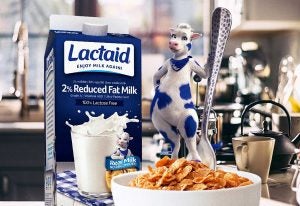The ADD SOY Act promoted by animal-rights groups and political activist supporters hopes to give kids a “nutritionally equivalent” plant-based milk option to cow’s milk in the National School Lunch Program, which operates in nearly 100,000 public and nonprofit private schools across the country.
The problem with this false equivalence is that, while plant-based milk alternatives have improved nutritional quality, most options are not yet there. Simply put, dairy milk is hard to beat regarding its nutrient profile.
The soy-alternative push has bipartisan sponsorship in both the U.S. Senate — from Sens. John Fetterman (D-Pa.), John Kennedy (R-La.), Cory Booker (D-N.J.), and Roger Wicker (R-Miss.) — and the U.S. House from Reps. Troy Carter (D-La.) and Nancy Mace (R-S.C.). Representatives say they’ve introduced the bill because “perhaps half of the 30 million kids participating in the NSLP are lactose intolerant,” though that statistic appears to come from plant-based advocacy groups, like Switch4Good. That group, along with the Animal Wellness Action and the Center for a Humane Economy are major backers of the bill.
The ADD SOY Act (which stands for Addressing Digestive Distress in Stomachs of Our Youth Act) would require public schools to offer a “nutritionally equivalent” soy milk option to kids participating in the NSLP and allow the U.S. Department of Agriculture to reimburse schools for those purchases, just as it does for cow’s milk.
The Soy Nutrition Institute Global “advocates for removing this specific requirement (only serving cow’s milk) to ensure the foods and beverages in school meals serve all children.”
The National Institute of Health says about 35 percent of people in the United States have lactose malabsorption. It’s important to note that malabsorption is the failure to digest or absorb lactose in the small intestine. Meanwhile, lactose intolerance refers to symptoms such as abdominal pain, bloating, or diarrhea in patients who ingest lactose.
However, according to the National Institute of Diabetes and Digestive and Kidney Diseases, certain ethnic and racial groups are more likely to experience lactose malabsorption: African Americans, American Indians, Asian Americans, and Hispanics.

Milk alternatives have certainly provided some excellent opportunities for those who are lactose intolerant, but dairy has even expanded the availability of lactose-free options such as Lactaid and Fairlife.
If you can tolerate milk without issues, there aren’t any real reasons to avoid it. Unless, we suppose, you don’t like it. And then, you do you.
While soy milk has the closest nutritional profile to dairy milk, and it’s fortified with vitamins to help take it a step closer to real milk, the calcium in soy milk may not be absorbed as well as dairy because it contains a natural compound phytate that inhibits calcium absorption.
Some other plant-based brands have updated their profiles to get their nutritional values closer to milk: Silk’s Soy Milk, Califia Farms Protein’s Oat Milk, Ripple’s Pea Milk, and Silk’s Almond and Cashew Milk.
These plant-based products have any number of innovative ingredients added to them to help them meet nutritional profiles similar to milk. Meanwhile, cow’s milk comes with fat, protein, and minerals packaged neatly in water, milk fat, and skim solids.
»Related: Bipartisan Senate group introduces bill to overhaul checkoff


